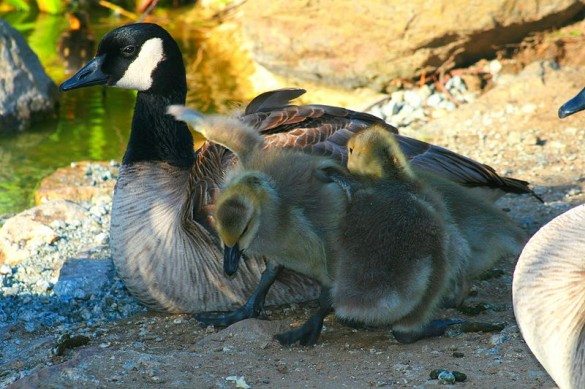Culled Geese Meat Sent To Food Pantries, But Is It Safe For Consumption?

On July 9, more than 700 Canada Geese were rounded up and killed at the Jamaica Bay Wildlife Refuge. Instead of dumping the dead geese into landfills, the meat from the birds was donated to food pantries and soup kitchens in New York.
Normally, the birds are gassed by carbon dioxide, making them unfit for eating. However, this year, officials decided to donate the meat to the needy. According to Carol Bannerman, a USDA Wildlife Services spokeswoman, goose meat is not an uncommon protein. In New York State, big game hunters donate their catch to those in need regularly.
Last year, the geese that were caught were donated to food charities in Pennsylvania.
Don Riepe was there the day the geese were culled.
“They did it as humanely as possible,” he said to Capital New York. “They rounded them up and put them in individual crates, like you transport any live product.”
After the geese were caught, they were taken to a meat processor in upstate New York on the same day.
The packaged wild goose meat was processed and labeled with a health advisory before it was sent out to shelters. The label stated that the New York State Department of Health recommended “no more than two meals of the wild geese per month because they may have been exposed to environmental contaminants.”
However, reps from the New York State Department of Environmental Conservation said that the meat was tested and posed no real concern to humans.
Others disagree. Jeff Tittel, director of the New Jersey Sierra Club, believes that the meat from near the airport is not safe for consumption.
“When airplanes take off they spray jet fuel and when they land they release jet fuel,” he said. “So do they really want that type of meat?”
Jean Grassman, a Brooklyn College professor of Health and Nutrition Sciences, said an urban contaminant called polychlorinated biphenyl, or PCB, may be a real risk for people.
“The concern is that they’re developmental toxicants,” Grassman stated. “The issue of contamination is a real possibility in wild fowl.”
Further, there is another concern pertaining to contamination of the goose meat. According to Jeanne Wilcox at the Food Bank for Westchester, “There was a possibility that the meat had birdshot — a type of shotgun shell, which could contain lead… anyone eating the meat should keep an eye out for shells while cutting it.”
On the whole, food banks don’t seem too skeptical when receiving game meat donations.
Peter Braglia from Long Island Cares said, “People don’t understand wild game is so much more nutritious than what you can buy in the store. There’s no hormones given to these birds.”




